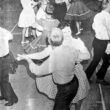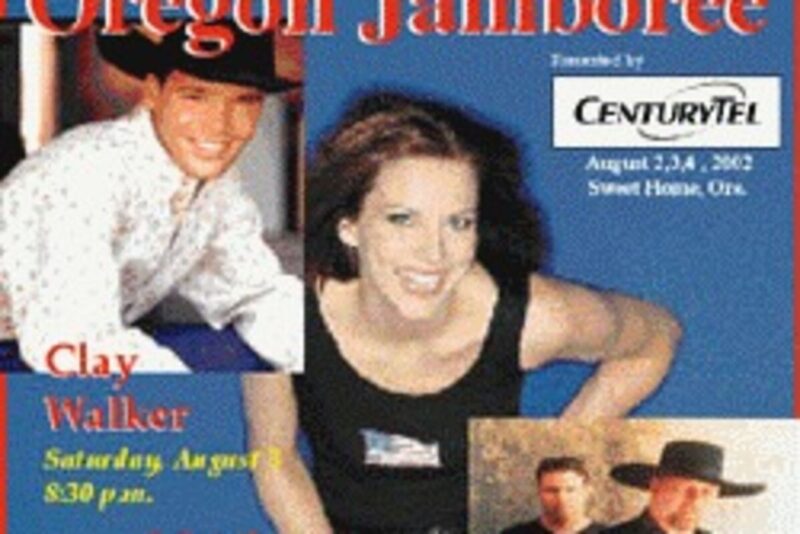The year was 1991.
Sweet Home was bracing itself for turmoil in its main economic engine–timber. The federal government was cutting back on allowable harvests on national forests under a 20-year-old law that was just coming into major usage–the Endangered Species Act. Families faced uncertain futures and the unemployment rates escalated.
Hundreds of men and women employed in local mills found their livelihoods gone overnight. Rallies and marches and letter-writing campaigns did little to swing the tide of public sentiment.
With each new round of industrial layoffs or plant closures, another main street store became empty. At one time, the total was 30 in Sweet Home alone, not counting Lebanon or other mid-Valley communities facing the same massive changes.
While other communities were stunned and felt helpless by the blows, Sweet Home regrouped, thanks in great part to a band of supporters calling themselves the Sweet Home Economic Development Group, Inc. Their birth sprang from initial meetings among local businesses at the Chamber of Commerce building.
What can the community do to generate money to be used to revitalize the community and diversify its economy?
“I remember sitting around talking about what we could do,” said Scott Proctor, who was a SHEDG president early in its development. “Marge Geil and Leslie Ancke had a connection with Wynonna Judd and they got the name of a Nashville music promoter. With good time, the rest is history.”
Proctor recalled the Jamboree was preceded by a festival in Sankey Park called “Cars, Crafts and Covered Bridges” in celebration of the then newly completed Weddle Covered Bridge.
“I still have a photo of a beautiful Bentley coming across the bridge,” Proctor said.
He said he recalls having a lot of anxiety about the first Jamboree.
“There was a lot of excitement about this from the get go,” Proctor said. “We just had so many questions and unknowns. I was especially concerned about how the folks who had spent so much time and effort to build the community fields would feel about having people tromp all over it. They supported us and we went ahead.”
Proctor said the vision of the Jamboree remains true today.
“This is great fun for the entire town,” Proctor said. “The community, through the many hundreds of volunteers, has taken ownership of the Jamboree. They’ve worked their tails off for this event.”
An article in The New Era in 1992 noted, “The first step in developing this project has been creation of a steering committee. Geil will head it up, assisted by Lesli Ancke. Other members of the committee are Kellie Good, Corky Lowen, Dave Vassar, Dan Dean, Craig Fentiman, Jann Horner, Chief Gary David, Bill Hampton, Erland Erickson, Larry Johnson, Doris Johnston and Bob Ratter.”
Geil died two years ago. Ancke now lives in the Hood River area.
Jann Horner succeeded Proctor as SHEDG president and served in that capacity through the first Jamboree and for three years.
“I think we made about $20,000 the first year,” Horner said. “We used those funds toward the mural projects, to buy flower baskets and as leverage for grant monies for several projects.”
There were some 125 volunteers the first year for the two-day event. That number soon shot up to more than 400 where it remains today.
Horner recently found a copy of the 1991-92 SHEDG action plan mission statement. It said, “The mission of the Sweet Home Economic Development Group, Inc. is to: create and promote economic growth, diversity and stability in the community of Sweet Home while enhancing a higher quality of living.”
“I remember the Jamboree brought a huge sense of pride to the community,” said Horner, who remains a volunteer today.
The community was still in its “grieving period” about the loss of timber jobs, Horner said. “The spirit was ‘can-do’ from the very first meeting.”
Staging the Jamboree hasn’t always been easy, Horner said.
In 1995, due to complications with their Nashville promoter, the Jamboree management staff took over the event from the ground up. It was a steep, often treacherous learning curve. It was also costly.
By then, SHHS Principal Bill Westphal was at the SHEDG helm. Now principal at Canby High School, Westphal told the community before the Jamboree unfolded that year that more ticket sales were needed. The event lost $112,000.
Fortunately for SHEDG, the Linn County Board of Commissioners believed in the Jamboree’s potential enough to make SHEDG a $50,000 loan to be repaid over five years. SHEDG board members and others, dug into their own pockets for the remaining $62,000.
“Sweet Home is a community with great potential but limited economic resources,” Westphal said. “The community has great resources, but they are also tied up by the government. So, the Jamboree is a way to backfill some of the economic losses incurred by the loss of timber industry jobs.”
Westphal said the community showed exemplary leadership and commitment by making loans to the Jamboree.
“When Marge said, hey, what about a concert, nobody really had a clue what that meant,” Westphal said with a laugh. ”
Despite the economic losses of 1995, the Jamboree forged ahead, recouping the losses in 1996 and paying off local supporters with interest.
The rough road wasn’t smoothed over yet, in 1998, due to an inability to secure talent in a timely manner, it was decided by the SHEDG board to cancel the Jamboree.
“There was a lot of questioning about whether we should go on,” Westphal said. “It was real clear that if the community didn’t step up, things would stagnate. They did and the Jamboree moved on.”
Max Thompson joined the SHEDG board in 1992 and was the group’s treasurer during those early, up and down years.
“It was a real struggle when we tried it on our own,” Thompson said. “We lost money in 1995 and we struggled nip and tuck. Unfortunately, it took several years to get on track money wise. We paid back the loans to the community from the 1996 Jamboree and paid back the county over five years. Since 1999 we’ve started to see some profits.”
Thompson said the community is beginning to reap the rewards of the event.
“It’s not just the money,” Thompson said. “The community is rewarded from the enjoyment of the event. Everyone feels good about the Jamboree.”
The year Tim McGraw and Faith Hill came to the Jamboree was a major turning point, Thompson believes.
“I think that in 1996 we had a good enough year that we felt we were going to make something out of this,” Thompson said. “It was the boost we needed.”
John Young was the career education coordinator at Sweet Home High School when the Jamboree started.
“I started off helping move stuff on the stage,” Young said. That progressed to chairing that group and then moving onto the management team, including helping secure talent.
“It was very stressful,” Young said. “We knew it could be successful. We also knew it was going to take at least three to five years before it became established.”
Young said being backstage the year Wynonna and Clint Black appeared together on the Black and Wy tour “was a great year.”
He said another vivid memory is being on stage, turning to face the crowd and seeing thousands of people having a great time.
“The expressions were across their face and they were clapping and yelling, it was great,” Young said.
Over the years, the Jamboree has attracted some of the hottest names in country music talent. Many times, the groups were just on their way up the star ladder, making them more affordable contract wise.
Jamboree line ups have included:
Oregon Jamboree in Sweet Home lineups…
1992
Saturday, Sept. 26
Wynonna Judd
Williams and Ree
Dennis Robbins
JJ White
Sunday, September 27
John Anderson
Collin Raye
Williams and Ree
Dennis Robbins
Advance ticket sales: $20
At gate: $25
1993
Friday, September 24
Brooks and Dunn
Saturday, September 25
Clint Black
Sunday, September 26
Wynonna
1994
September 16
Tracy Byrd
Jeff Foxworthy
Nitty Gritty Dirt Band
Diamond Rio
September 17
Marb Mobley and Countryfied
Lisa Brokop
Doug Kershaw
Junz Bunzow
The Bellamy Brothers
Billy Ray Cyrus
September 18
Marb Mobley and Countryfied
First Call
Kathy Troccoli
Williams and Ree
Merle Haggard
1995
Friday, September 22
New South
McKenzie River Band
Mitchell John Band
Louise Mandrell
Kentucky Headhunters
Saturday, September 23
Nothin’ too Fancy
Alena and Pacific Country
Cross Country
Bailie and the Boys
Chely Wright
Earl Thomas Conley
Dan Seals
Marshall Tucker Band
Sunday, September 24
Ironhorse
The Lansings
Marcy Brothers
Mark Collie
Lee Greenwood
1996
Friday, September 20
Nothin’ But Trouble
Rough Stock
Lydia Miller
Western Flyer
Lorrie Morgan
Saturday, September 21
Marcy Brothers
Wylie and the Wild West
Ronna Reeves
Ty Herndon
Billy Dean
Sunday, September 22
Ambush
Ironhorse
Faith Hill
Tim McGraw
1997
Friday, September 19
Les Richardson
Alena and the 12 Gauge Show Band
Williams and Ree
Tanya Tucker
Saturday, September 20
Ambush
Crystal Bernard
Little Texas
Ricky Van Shelton
Sunday, September 21
Alexis and Midnight Express
Roughstock
T. Graham Brown
Sawyer Brown
1999
Friday, August 6
Johnny Limbo and the Lugnuts
Claudia Church
Mark Wills
Toby Keith
Saturday, August 7
Steve Benavides
Kellie Mack’s Rhythm Stampede
Shane McAnally
Bill Engvall
Hal Ketchum
Mark Chestnutt
Sunday, August 8
Alexis
DaVeigh and the Lonesome Road Band
Jessica Andrews
Rhett Akins
Reba McIntire
2000
Friday, August 4
Victor Sanz
The Rubes
The Charlie Daniels Band
Dwight Yoakam
Saturday, August 5
Les Richardson
Double Trouble
John McEuen/Jimmy Ibbotson
Chely Wright
Kenny Chesney
Wynonna
Sunday, August 6
The Boomer Band
The Legendary Boomettes
Terri Clark
Sawyer Brown
2001
Friday, August 3
Johnny Law and the Rebels
The Kingsmen
Marty Stuart
Asleep at the Wheel
Saturday, August 4
Traci Lynn and the Rubes
Sons of the Desert
Lila McCann
Tracy Byrd
Kenny Rogers
Sunday, August 5
Amy Clawson
Berry, Bogguss and Dean
Lee Ann Womack
2002
Friday, August 2
Monty Moss and the Broken Record Band
Melody Guy
Keith Urban
Martina McBride
Saturday, August 3
Joe Stoddard
Carolyn Dawn Johnson
Sammy Kershaw
Sara Evans
Clay Walker
Sunday, August 4
Amy Clawson
McQueen
Asleep at the Wheel
Montgomery Gentry




